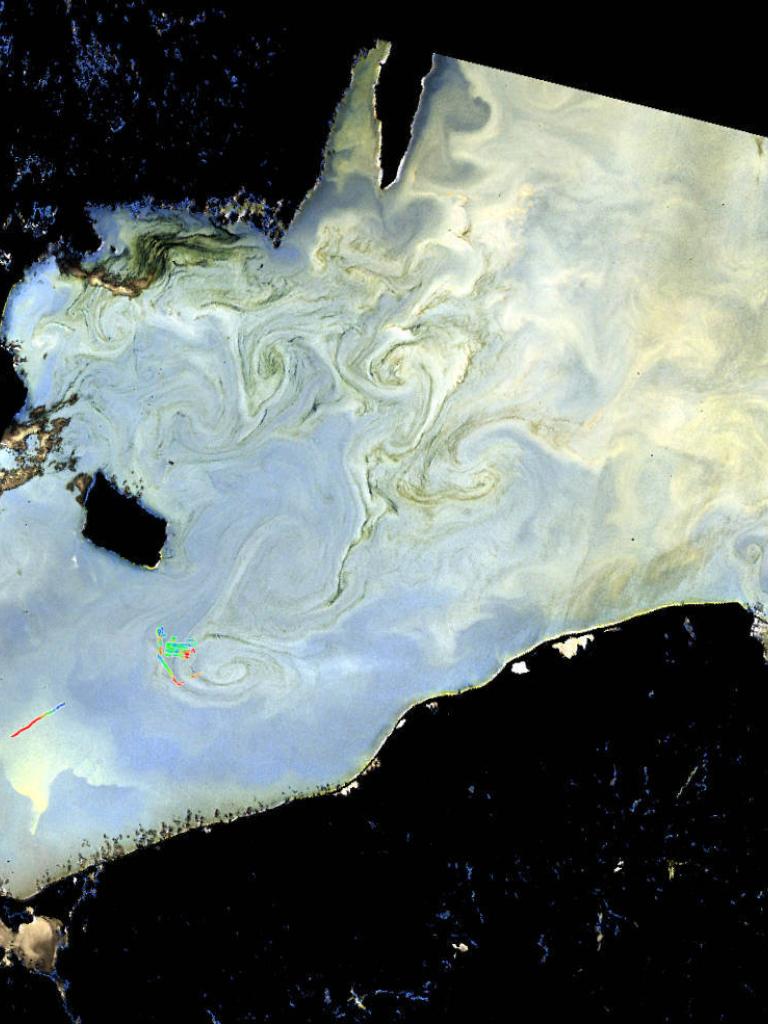
EUMETSAT takes over operations of Copernicus Sentinel-3A satellite


After successful completion of in-orbit commissioning, ESA has handed over operations of the Copernicus Sentinel-3A satellite to EUMETSAT
05 November 2024
13 July 2016
During the five-month in orbit commission phase following the launch on 16 February, EUMETSAT supported ESA in the verification that the satellite, instruments and the prime functions of the ground segment perform as expected.
The first images from all three main instrument chains - the Ocean and Land Colour Instrument, the Sea and Land Surface Temperature Radiometer and the SAR Altimeter associated to the Microwave Radiometer - were produced jointly and released to the public in March and early April, already showing the high potential of the Sentinel-3 mission.
Captured by Sentinel-3A on 23 June 2016, this image shows an algae bloom in the Baltic Sea. Sentinel-3A carries a suite of instruments to monitor our changing world. This image was captured with its ocean and land colour instrument, OLCI, which provides biogeochemical measurements to monitor, for example, concentrations of algae, suspended matter and chlorophyll in seawater. This information can be used to predict harmful algal blooms, which is particularly relevant in the Baltic Sea where extreme blooms are a significant problem. The health and vulnerability of marine ecosystems is fundamental to our knowledge of ocean productivity and, in turn, fish stocks. The coloured tracks in the image are temperature measurements from a zeppelin, which was used as part of Helmholtz-Zentrum Geesthacht’s Clockwork Ocean project. Satellite imagery was used to help locate these eddies.
Following liftoff in February 2016 and a five-month commissioning period, the Sentinel-3A satellite was handed over for operations on 13 July 2016.
Credits: Contains modified Copernicus Sentinel data (2016)/HZG
The formal handover concludes a transition phase during which EUMETSAT, under the supervision of ESOC, took an increasing role in operating the satellite, sending its first command on 29 April, performing its first manoeuvre on 2 June and carrying out routine operations since 4 July.
José Morales, Head of Copernicus Flight Operations Office at ESOC, ESA's Space Operations Centre in Darmstadt said: “After almost five months of intense work implementing the Launch and Early Orbit Phase, Commissioning and Calibration phases of Sentinel-3A , in parallel with the transition of operations responsibility to the EUMETSAT team working with us, it is now time to hand-over the ‘little baby’ to its final operator. The ESOC team will now concentrate on the preparation of its twin brother, Sentinel-3B, for the launch in 2017”.
Kevin Marston, EUMETSAT System Operations Manager said: “Thanks to the excellent cooperation with the ESOC teams, we are now ready to take over operations of the satellite and the Flight Operations Segment and to enter the operations ramp up phase during which we will start to deliver Sentinel-3 marine products to Copernicus users.”
The next milestone is to follow in autumn, when the Payload Data Ground Segment will be declared operational for an initial set of products, and its Marine component will be handed over to EUMETSAT. EUMETSAT will then deliver the Sentinel-3A marine mission on behalf of the European Union and in partnership with ESA.
The operations ramp-up phase will continue into spring 2017 and EUMETSAT and ESA will continuously increase the portfolio of operational products, capitalising on the joint calibration and validation programme.

Day and night land-surface temperatures
The animation shows the difference in the day and night temperatures of the land surface. These daytime measurements were taken by Sentinel-3A’s radiometer on 20 June 2016 and the night time readings were taken on 21 June.
Credits: Contains modified Copernicus Sentinel data (2016)


